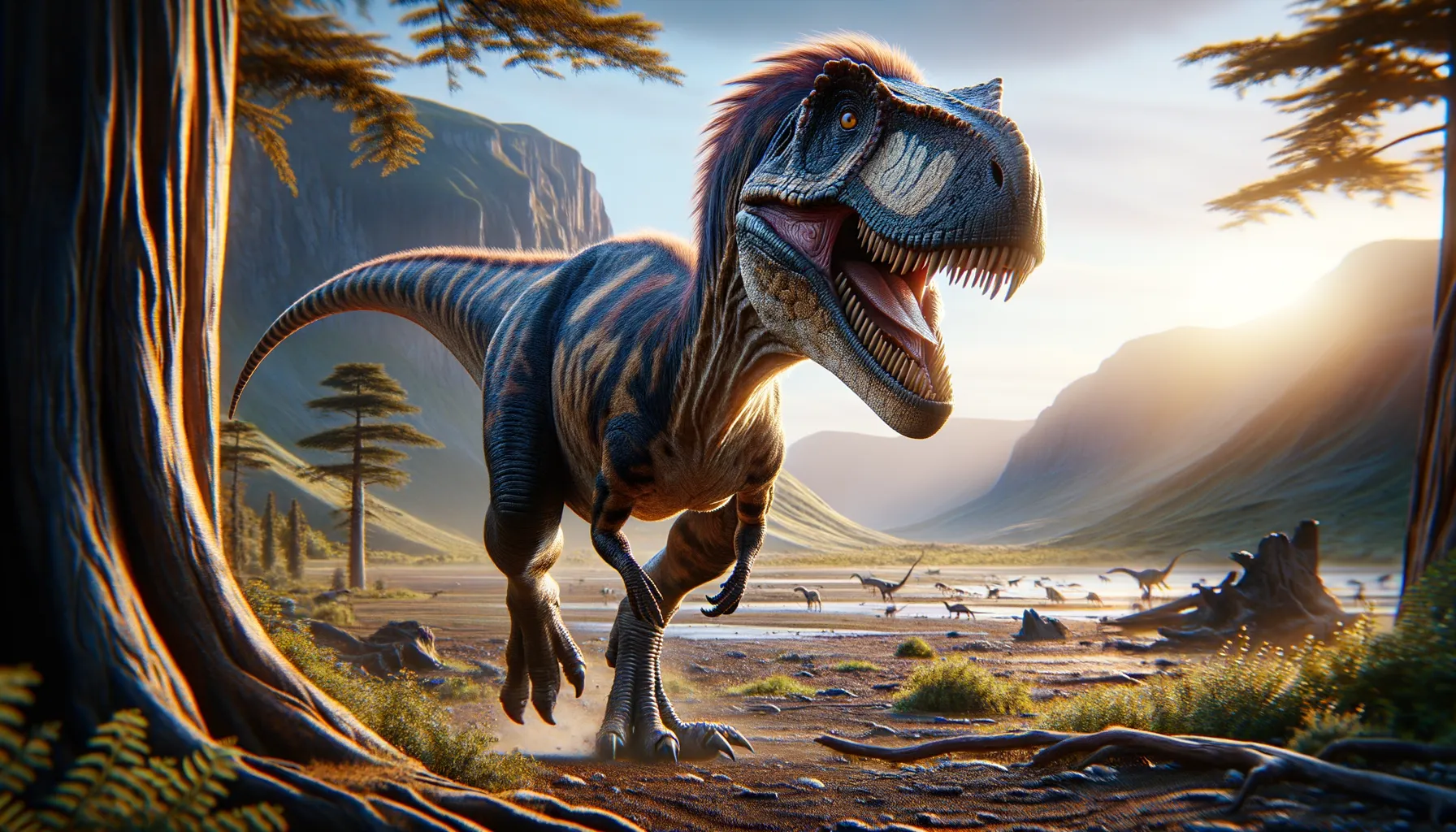
Beelemodon
A mighty presence of the Cretaceous era.
Period
Cretaceous
Length
Roughly 6 meters in total length.
Height
Around 2 meters tall at the shoulder.
Weight
Approximately 500 kilograms.
Beelemodon was a mid-sized theropod dinosaur that roamed North America during the Cretaceous period. Known for its substantial build and unique dental features, it is thought to have been a versatile hunter and forager. This dinosaur fascinates paleontologists due to its distinctive adaptations, which suggest a complex lifestyle that might have involved precise predatory behaviors. Beelemodon's remains provide key insights into the ecological dynamics of its era.
Diet
Beelemodon was likely an omnivore, consuming both plant material and smaller animals. Its robust teeth suggest it could process tough vegetation and crush bones, indicating dietary flexibility.
Hunting
With sharp claws and a powerful build, Beelemodon was an opportunistic hunter, preying on smaller dinosaurs and other animals. It possibly used ambush tactics in forested environments to catch its prey by surprise.
Environmental challenges
During the Cretaceous, Beelemodon faced fluctuating climates that shifted between warmer and cooler periods. Its survival depended on adapting to varying food availability and coping with evolving competitors. Volcanic activity and shifting continents posed additional challenges to its habitat stability.
Speed
Estimated to be moderate, similar to modern large mammals.
Lifespan
Lived for several decades, much like large quadrupeds today.
First discovery
First discovered in the late 20th century in North America.
Fun Facts
- Beelemodon was a small dinosaur that lived during the Late Cretaceous period.
- Its name, Beelemodon, means 'Beetle Tooth' due to its unique tooth shape.
- Fossils of Beelemodon were first discovered in North America.
- This dinosaur is part of the group known as theropods, which also includes famous species like T. rex.
- Unlike the larger predators, Beelemodon was likely an insectivore, feeding mostly on insects.
- Beelemodon had sharp teeth perfect for crunching through the exoskeletons of beetles and other hard-shelled insects.
- Despite its small size, Beelemodon was a nimble and quick dinosaur, helping it to evade predators.
Growth and Development
Beelemodon demonstrated rapid growth rates during juvenile stages, allowing it to quickly reach sizes less vulnerable to predation. Its development involved significant skeletal changes, optimizing its limbs for powerful movement. The dinosaur's growth patterns suggest seasonal influences, indicating that food availability varied throughout the year.
Habitat
It inhabited a range of environments, from dense forests to open plains, demonstrating considerable ecological adaptability. Beelemodon thrived in semi-arid regions with seasonal rainfall, influencing its migratory patterns. Water sources would have been crucial for its survival, impacting daily and seasonal behaviors.
Interaction with other species
As a mid-level predator, Beelemodon likely interacted with both prey and higher predators, possibly scavenging from larger carnivores. It coexisted with herbivorous dinosaurs and smaller mammalian species, indicating a complex food web. Competition and predatory pressures shaped its behavioral strategies and ecological role.
Natural lifespan
Beelemodon likely had a lifespan similar to large modern reptiles, around 25-30 years.
Reproduction
This dinosaur laid eggs, with nesting behaviors likely influenced by environmental factors such as temperature and predator presence. Females may have guarded nests until hatching, resembling the behaviors of some modern birds. Juveniles likely received some initial parental care before becoming independent.
Social behaviour
Beelemodon may have demonstrated solitary or small group social structures, possibly forming groups during specific life stages or seasonal migrations. Communication could have involved vocalizations or visual displays, maintaining group cohesion. Social interactions would have impacted its hunting efficiency and reproductive success.
Fossil locations
Fossils primarily found in the Western United States offer crucial data on its range and ecological impact. The well-preserved remains provide insights into Cretaceous ecosystem dynamics. Additional fragments discovered in Canada suggest a wider habitat distribution during its time.
